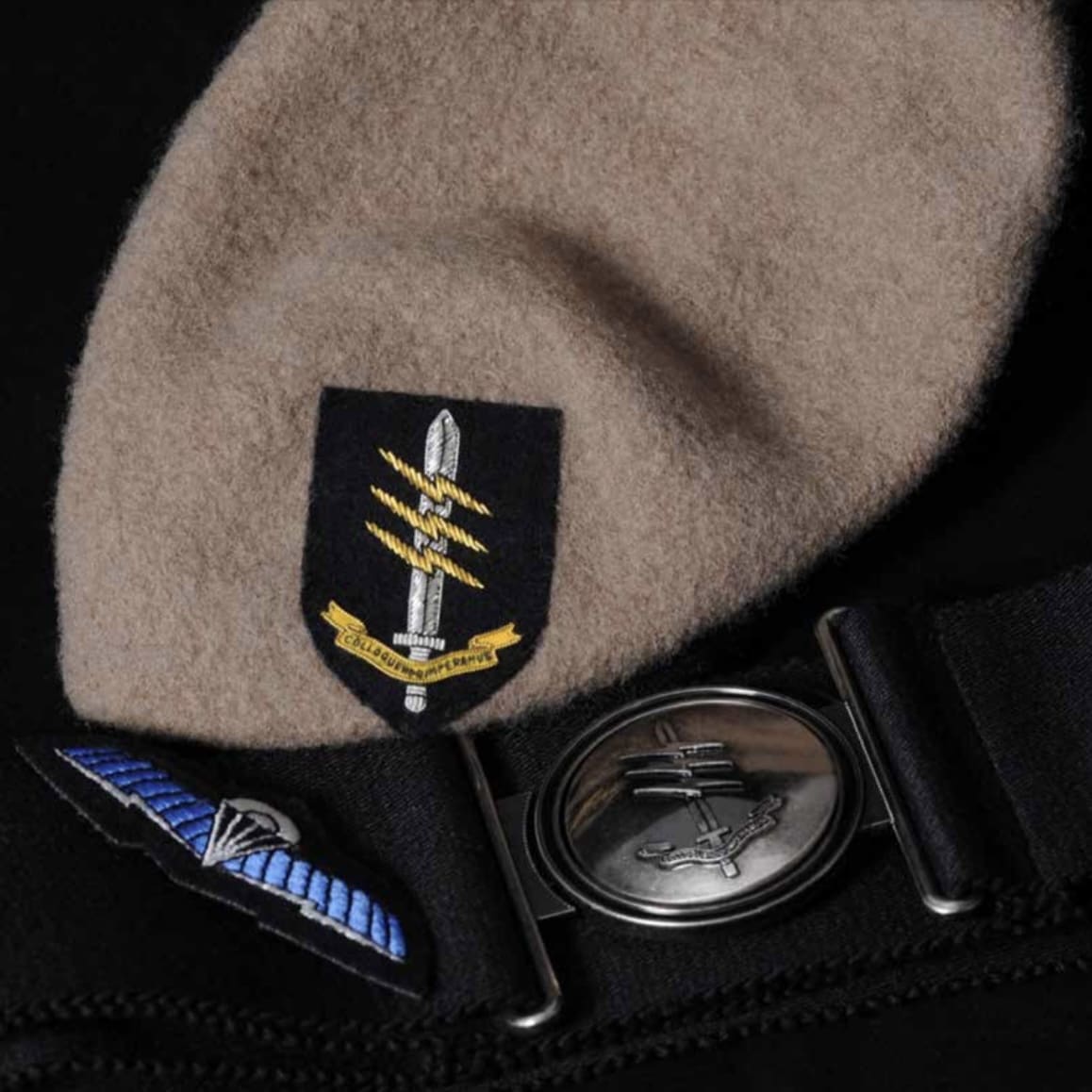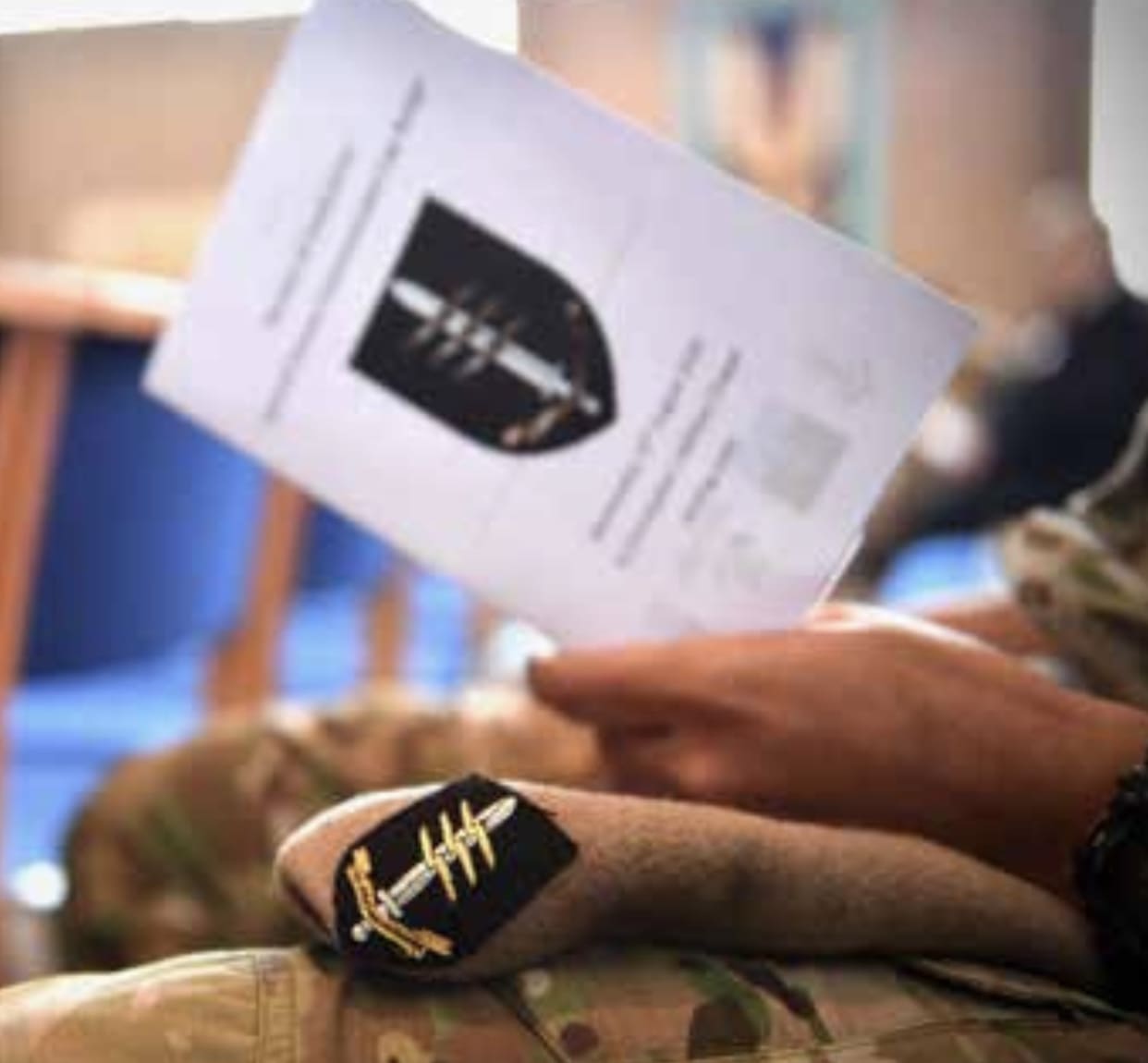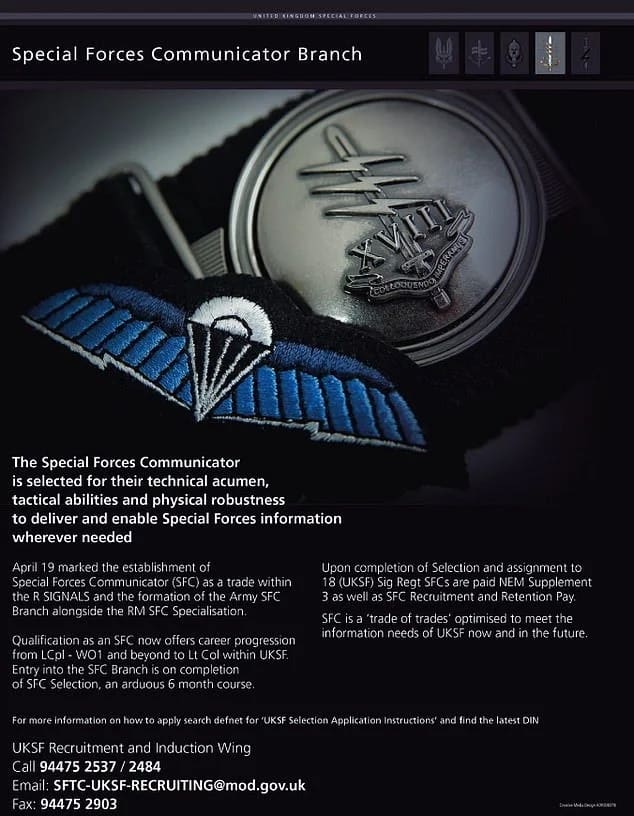
According to the latest issue of the Royal Signals magazine, “The Wire” the new SFC cap badge was endorsed on 18 Aug 20 and was marked by a small ceremony in the church on Stirling Lines by the Unit Padre, with the Master of Signals Lieutenant General Nick Pope KCB CBE and HQ 1 (UK) Signal Brigade Commander Brigadier John Collyer in attendance.

Male members of all the Royal Navy, Royal Marines, British Army and the Royal Air Force are eligible to become Special Forces Communicators. They, along with Royal Signals soldiers in trade, are assigned to Hereford based 18 (UKSF) Signal Regiment and provide close support to the SAS, the SBS and the SRR.
The Regiments consists of:
• SBS Signal Squadron
• 264 (SAS) Signal Squadron
• 267 (SRR) Signal Squadron
• 268 (UKSF) Signal Squadron
• 63 (UKSF) Signal Squadron
18 (UKSF) Signal Regiment fulfils several roles:
•Provides highly secure communications for UKSF operations
•Provides electronic warfare and signals intelligence for special forces operations
•Intercepts and monitors enemy communications at short range in difficult circumstances for strategic purposes

Assessment, Selection and Training is quite comprehensive. Candidates must successfully complete a five day Briefing Course. Next, is an optional SFC Preparation Course.
The Special Forces Communicator Course itself consists of six phases:
• Technical Trade Assessment (one week)
• General Support Comms (six weeks)
• Physical Aptitude (five weeks)
• Close Support Comms (five weeks)
• Conduct After Capture (two weeks)
• Military Training (three weeks)
• SF Parachute Training (three weeks)
Candidates must also complete SERE training.
Once qualified, SFCs are eligible for specialty pays.

